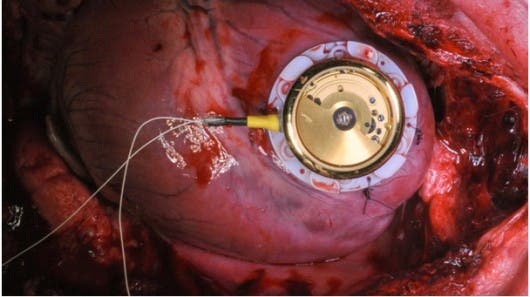
A pacemaker is a small device that’s placed in the chest or abdomen to help control abnormal heart rhythms. This device uses electrical pulses to prompt the heart to beat at a normal rate. Since its introduction, the pacemaker has been hailed as a true game changer in medicine, helping treat arrhythmias or tachycardia and saving millions of lives in the process. It has one major fault, though: it runs on batteries and, like all batteries, these eventually run out. Unlike the Duracell bunny, there’s no plastic cap you can retract to replace the batteries, so patients need to have their chests open again by surgery – as if once wasn’t enough.
Heart’s run out of juice…
[ALSO SEE] Heart-glove fitted with stretchy electronics might replace pacemakers
This might be set to change after Swiss scientists from the University of Bern demonstrated a new device that essentially generates electrical power from the mechanical energy of heartbeats. The design is inspired from auto-winding wristwatches, which wind a mechanical spring when the user’s arm is moving, like while walking. In our case, the device is sutured to the heart instead of being worn on the wrist, and its spring is wound by heart contractions instead of arm movements.
When the heart contracts, the spring charges. When the spring discharges, it releases the energy in a capacitor, which later powers the pacemaker. The device has been tested in a live 60-kg (132-lb) pig and researchers found it could generate up to 52 microwatts of power – more than enough to power a pacemaker, typically requiring only 10 microwatts.
[RELATED] Cybercrime gets frightening real: hacking pacemakers and other devices
Before they move this product to the operating table to join pacemakers, the researchers say they first want to make the system more efficient and smarter at detecting heart contractions. They also want to make it smaller.
The findings were reported at the 2014 European Society of Cardiology Congress.






